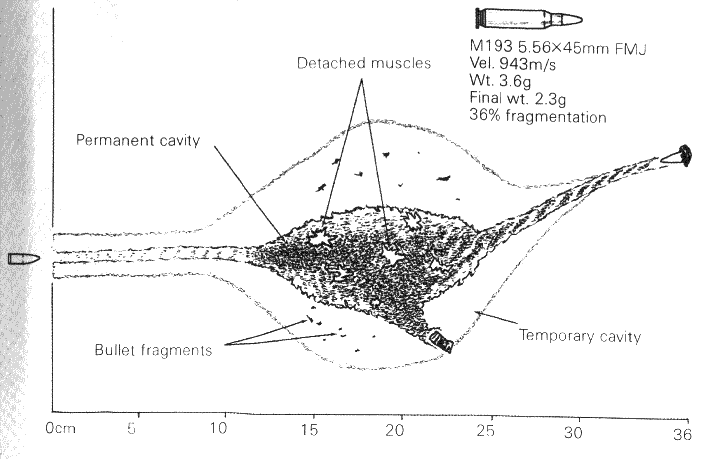Gun-Reck
Member
- Joined
- May 16, 2023
- Messages
- 557
The graphs are about M855, yet his data supports his statement "When M855/193 fragment quickly, they can be very effective. Unfortunately, they could just as easily exhibit poor performance without the end user really knowing how well his particular rifle/ammo performs."
The M193 55 gr. ball round mentioned, was not supported.
M193:
The damage caused by the 5.56 mm bullet [M193} was originally believed to be caused by "tumbling" due to the slow 1 turn in 14-inch (360 mm) rifling twist rate.[43][58] However, any pointed lead core bullet will "tumble" after penetration into flesh, because the center of gravity is towards the rear of the bullet.
The large wounds observed by soldiers in Vietnam were caused by bullet fragmentation created by a combination of the bullet's velocity and construction.[60] These wounds were so devastating that the photographs remained classified into the 1980s.[61]...
... The original ammunition for the M16 was the 55-grain M193 cartridge. When fired from a 20 in (510 mm) barrel at ranges of up to 300 feet (100 m), the thin-jacketed lead-cored round traveled fast enough (above 2,900 ft/s (880 m/s))...
that the force of striking a human body would cause the round to yaw (or tumble) and fragment into about a dozen pieces of various sizes thus created wounds that were out of proportion to its caliber.[142][143]
These wounds were so devastating that many considered the M16 to be an inhumane weapon.[146][147][148]
These wounds were so devastating that many considered the M16 to be an inhumane weapon.[146][147][148]
As the 5.56 mm round's velocity decreases, so does the number of fragments that it produces.[24] The 5.56 mm round does not normally fragment at distances beyond 200 meters or at velocities below 2500 ft/s, and its lethality becomes largely dependent on shot placement.[24][143]



